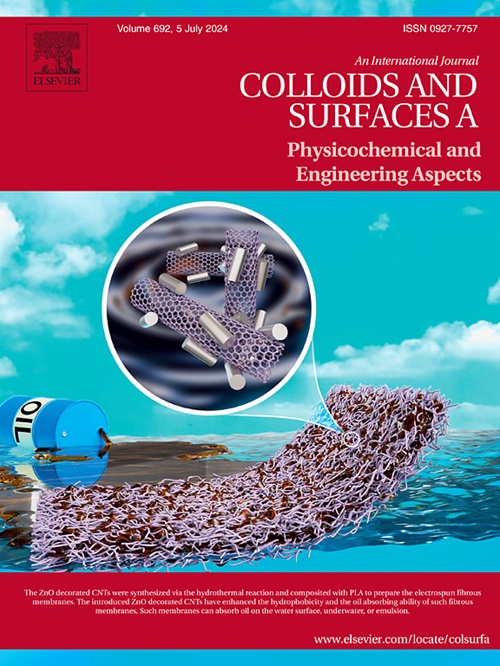持久修复的纳米抗菌策略:优化的mgo负载粘合剂树脂对抗生物膜的形成
IF 4.9
2区 化学
Q2 CHEMISTRY, PHYSICAL
Colloids and Surfaces A: Physicochemical and Engineering Aspects
Pub Date : 2025-04-29
DOI:10.1016/j.colsurfa.2025.137083
引用次数: 0
摘要
在光固化过程中,牙胶粘剂产生内应力,损害边缘完整性,导致微生物渗透和随后的生物和机械并发症。为了缓解这一问题,我们通过添加氧化镁纳米颗粒(MgONPs)开发了一种抗菌光固化粘接树脂,并对其性能进行了系统评估。在2 wt% MgONPs负载下,该粘合剂对变形链球菌(S. mutans)表现出抗菌活性,抑制率为94.10 %,同时保持相当的机械性能和结合强度。材料表征表明,随着MgONPs比例的增加,吸水率和膜厚总体增加。细胞毒性试验证实了所有组的生物安全性。最佳MgONPs比确定为1-2 wt%,在不影响关键材料性能的情况下实现有效的抗菌功能。该研究为通过纳米材料集成开发耐用抗菌牙胶粘剂提供了可行的策略,显示了防止复发性蛀牙和提高临床耐久性的希望。本文章由计算机程序翻译,如有差异,请以英文原文为准。
Nano-antibacterial strategy for durable restoration: Optimized MgO-loaded adhesive resins combat biofilm formation
During process of light-curing, dental adhesives develop internal stresses that compromise marginal integrity, leading to microbial infiltration and subsequent biological and mechanical complications. To mitigate this, we developed an antibacterial light-curing adhesive resin by incorporating magnesium oxide nanoparticles (MgONPs) and systematically evaluated its performance. At 2 wt% MgONPs loading, the adhesive demonstrated antibacterial activity against Streptococcus mutans (S. mutans) with a 94.10 % inhibition ratio, while maintaining comparable mechanical properties and bond strength. Material characterization showed an overall increase in water absorption and film thickness with increasing MgONPs ratio. Cytotoxicity assays confirmed biosafety for all groups. The optimal MgONPs ratio was identified as 1–2 wt%, achieving effective antibacterial functionality without compromising critical material properties. The study provides a viable strategy for developing durable antibacterial dental adhesives through nanomaterial integration, showing promise for preventing recurrent decay and enhancing clinical durability.
求助全文
通过发布文献求助,成功后即可免费获取论文全文。
去求助
来源期刊
CiteScore
8.70
自引率
9.60%
发文量
2421
审稿时长
56 days
期刊介绍:
Colloids and Surfaces A: Physicochemical and Engineering Aspects is an international journal devoted to the science underlying applications of colloids and interfacial phenomena.
The journal aims at publishing high quality research papers featuring new materials or new insights into the role of colloid and interface science in (for example) food, energy, minerals processing, pharmaceuticals or the environment.

 求助内容:
求助内容: 应助结果提醒方式:
应助结果提醒方式:


